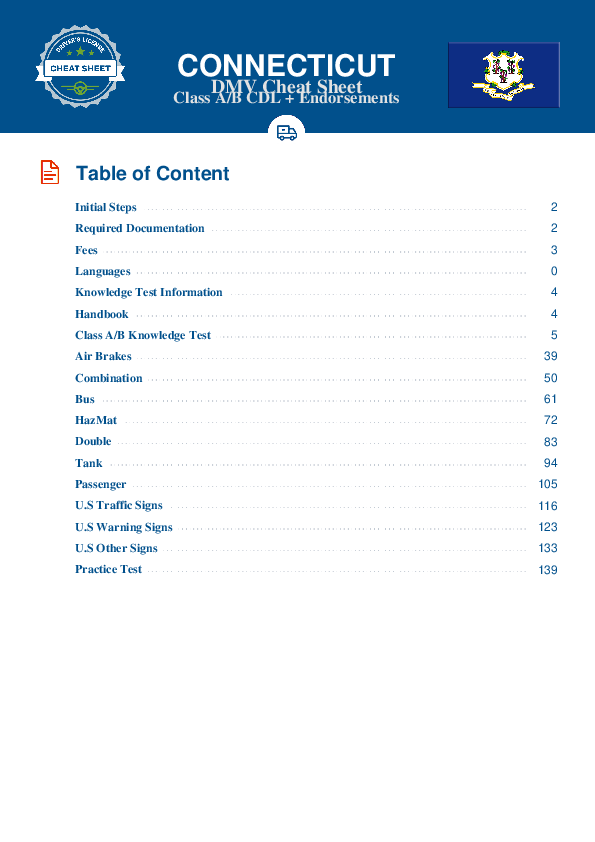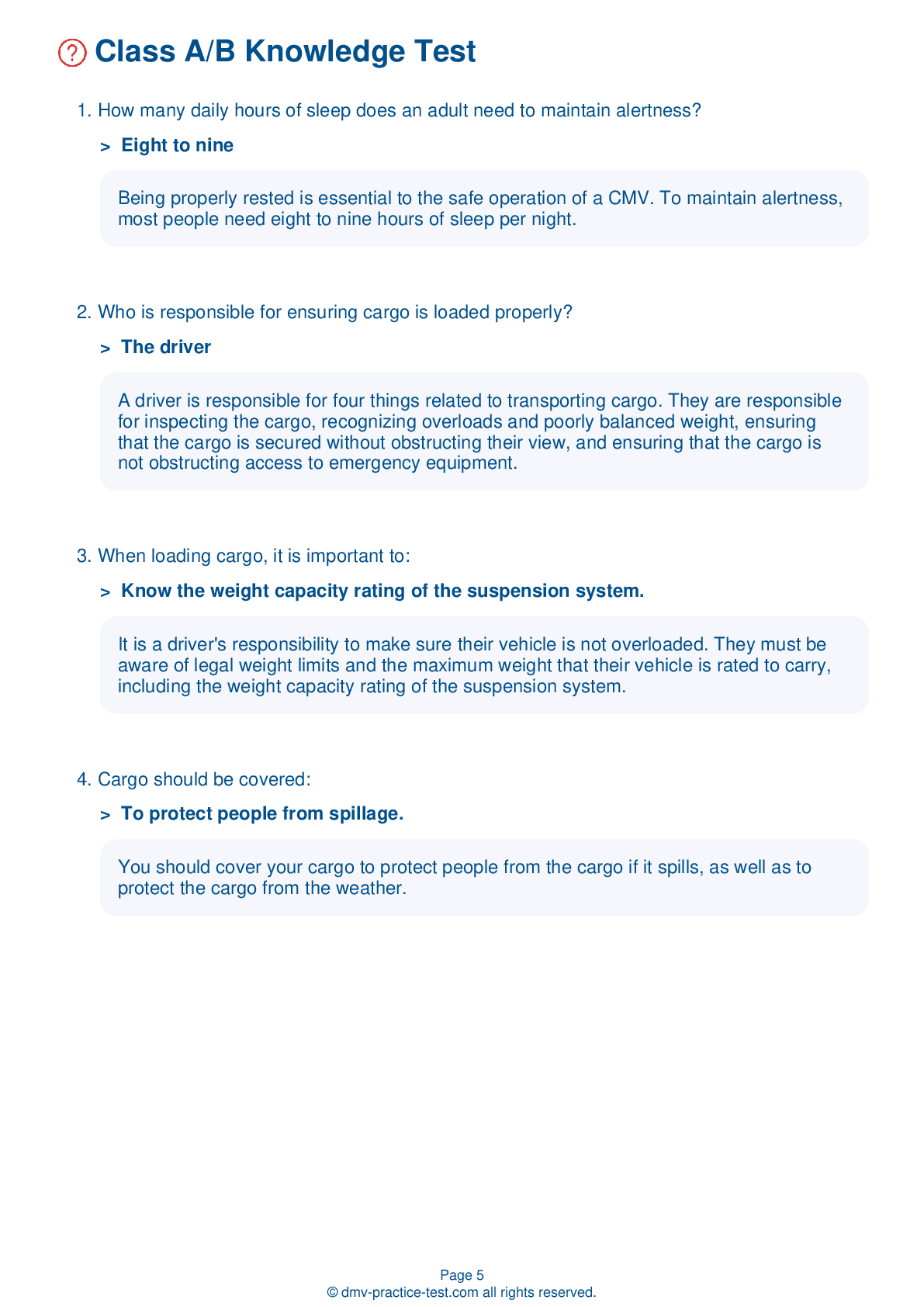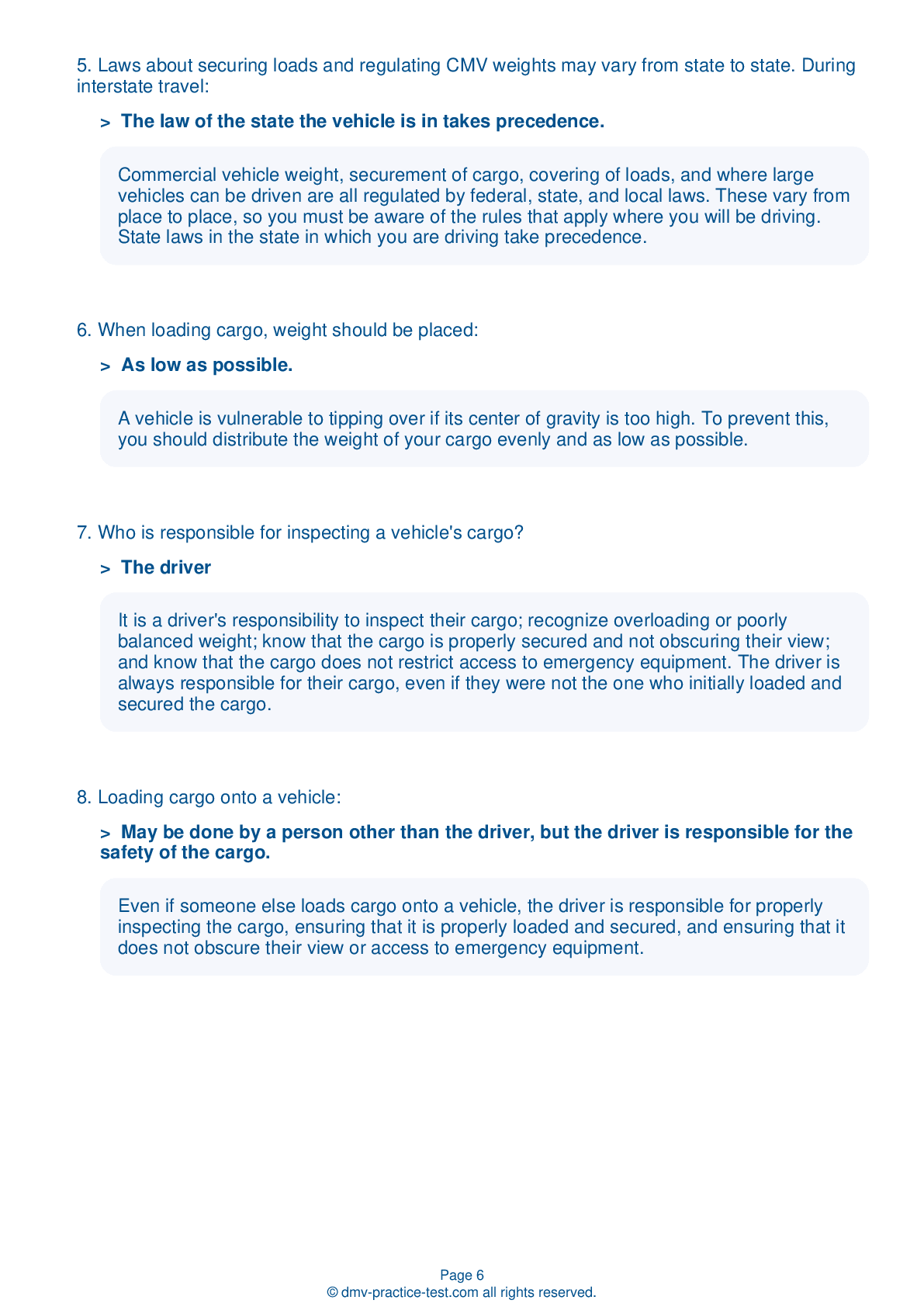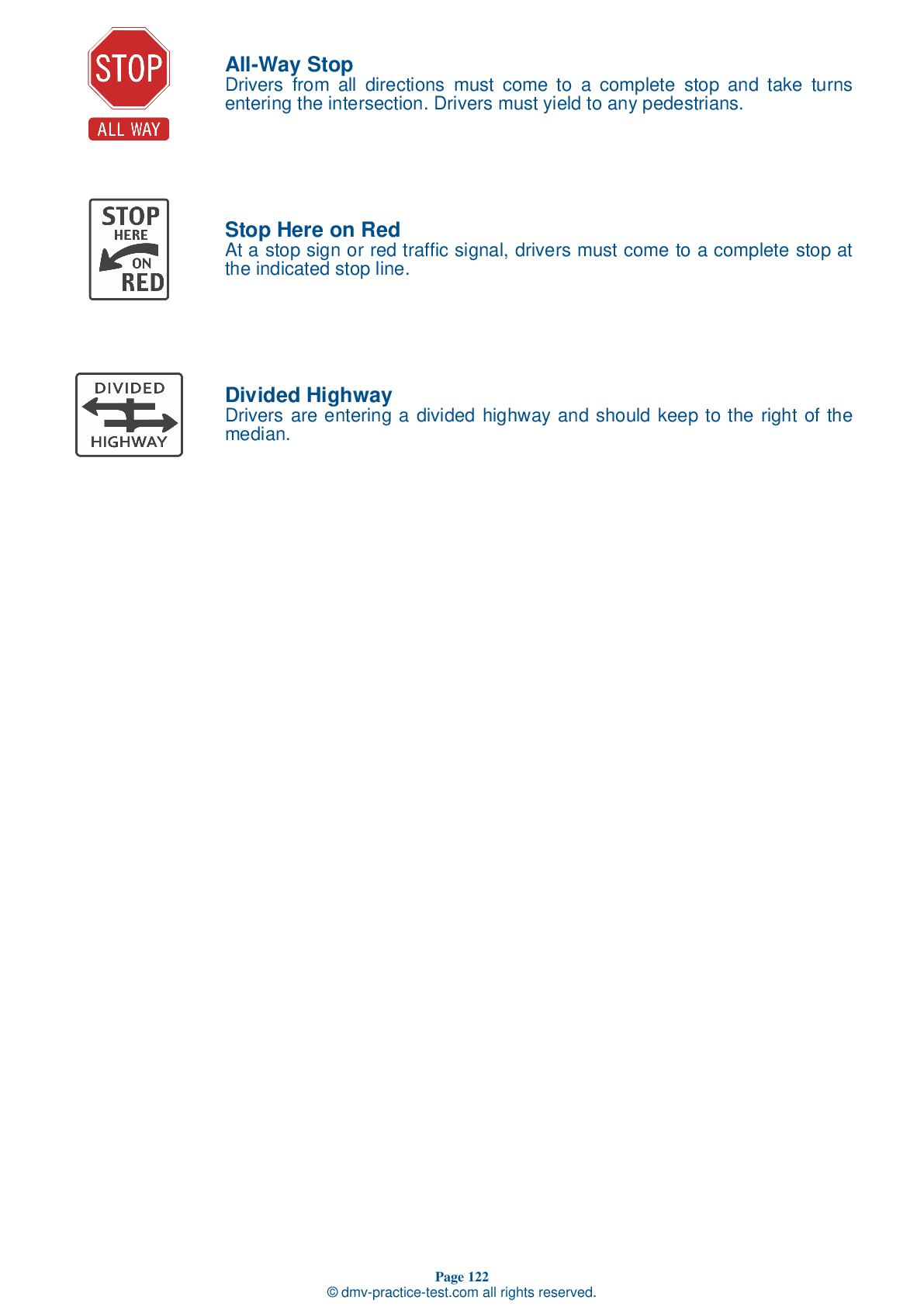Double Triple Test | Connecticut 2025 #2 Page 2 of 3
Train for FREE with our Connecticut CDL double triple practice test online. The official exam test consists of several obligatory parts, with all of them checking your knowledge of different blocks of road rules. If you need to obtain a CT CDL double triple license in 2025, practice as much as possible. Free sample tests published on our website will help you check and improve your knowledge and boost your grades. Please bear in mind that DMV requirements may vary from state to state.
8 . When checking your vehicle's lights before driving:
To check your vehicle's lights before a trip, you should set the parking brake, turn off the engine, remove the key from the ignition, and take the key with you. Turn on your low beam headlights and four-way flashers. Get out of the vehicle to make sure the lights are working properly.
10 . Which of the following is not an example of a distracted person that motorists should be worried about?
You should be cautious when you are near people who are not paying attention to the road. Be wary of drivers who are engaged in conversation with passengers, children near the road, and road workers.
11 . Distracted driving:
Distractions while driving can be physical (such as reaching for an object), mental (such as making conversation with a passenger), or both (such as holding a phone to send texts). Strategies to help you avoid distracted driving include pre-programming radio stations; planning out your route in advance; avoiding complex or emotionally taxing conversation while driving; adjusting your mirrors before setting out; and not eating, drinking, or smoking while behind the wheel.
12 . The service air line is attached to the:
The service air line carries air and is controlled by either the foot brake or trailer hand brake. The service air line is attached to relay valves, which allow the trailer brakes to be applied quickly.
13 . Where must placards be placed?
If a vehicle is carrying hazardous materials that require placarding, there must be identical placards placed on the front, rear, and both sides of the vehicle.
14 . If involved in an accident, which of the following is not recommended?
When involved in an accident, you should protect the area, notify authorities, care for the injured, collect required information, and report the accident. You can lose your license for leaving the scene of an accident.
See the exact questions that will be on the 2025 Connecticut DMV exam.
99.2% of people who use the cheat sheet pass the FIRST TIME
Lillian MCcranie explains how our CDL study guide was helpful in passing the exam and recommends it to everyone.
Cameron tells us how he purchased the CDL exam, and found it to be a useful tool which helped him pass the exam and find a job.



